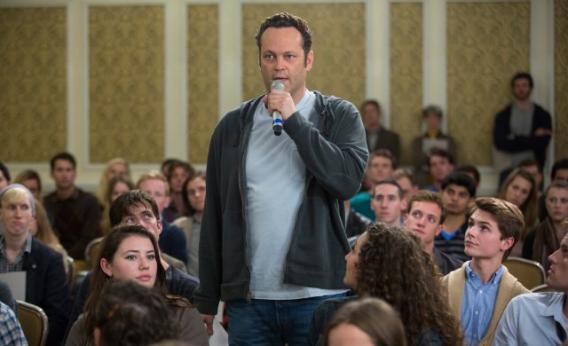In the trailer for the upcoming romantic comedy Delivery Man, the aimless protagonist played by Vince Vaughn learns that the sperm donations he made years ago have left him the father of 533 children. “It is impossible to be the father of 533 children,” the character says, and he’s not the only one to question the movie’s premise: “Even if you’re talking … what, half a syringe or one-third of a shot glass per woman,” wonders Jeffrey Wells of Hollywood Elsewhere, “wouldn’t several pints if not quarts be necessary to impregnate 535? Sorry, but these questions have to be raised.” Indeed. Is it really possible for one sperm donor to father 533 children? And how much would it take, “pints” or “quarts”?
About 1.5 to 3 liters. It’s theoretically possible to donate enough sperm to father 533 children, and there are a couple men who have come close, but it would take years, and these days there are guidelines and restrictions to prevent it.
Most sperm banks and fertility clinics cap the number of donations that even the most generous donors can make. In the United States, for example, most fertility clinics and sperm banks adhere to guidelines issued by the American Society of Reproductive Medicine (ASRM), which recommends restricting conceptions by individual donors to 25 births per population area of 800,000. This is meant to limit the number of half-siblings in a given area and reduce the chance of inbreeding. Others must obey even stricter restrictions. For example, both the Sperm Bank of California and the laws of the United Kingdom allow no more than 10 families to use a donor’s sperm. Still, in the U.S. these guidelines aren’t enforced by law, so it’s hypothetically possible that one donor could scatter his seed more widely, especially if he donated to several different clinics.
Even so, the realities of sperm donation make such a massive brood unlikely to the point of impossibility. Gail Prins, a professor of physiology and director of the University Andrology Laboratory at the University of Illinois at Chicago, detailed the various obstacles. To start with, though each ejaculation provides three to four vials of semen (each vial is about 0.5 to 1 milliliters), it’s rare for all samples to meet fertilization standards. Moreover, even when using those samples that make the grade, these inseminations manage to impregnate fertile women only about a third of the time. Finally, many women who apply for artificial insemination are not fertile, further increasing the amount of required sperm. Prins estimated that to father 533 children through single-embryo insemination, a donor would have to provide around 3,000 sperm samples.
Grace Centola, laboratory and tissue director for the Cryos International sperm bank in New York, arrived at a similar conclusion: She calculated that about 1,066 separate ejaculations would be needed, producing around 3,198 vials of ejaculate (three per ejaculation). Assuming the donor could provide three suitable specimens a week, which is highly unlikely given the difficulty of producing suitable sperm (something as simple as a stressful weekend can ruin a batch), it would take almost seven years to provide sufficient semen. Donors never participate for that long—even setting donor guidelines aside, most men seem to donate for a year or two, max—and most sperm banks only store samples in the hundreds at most. In addition, the majority of sperm banks record births per donor to comply with ASRM guidelines, and some have begun keeping registries to prevent donors from participating in multiple banks.
So that leaves us with two possibilities: Delivery Man’s premise is another Hollywood exercise in fanciful storytelling, or its protagonist committed seven exhausting years of his life to spreading his seed. The former seems more likely, though such a paternal feat does have precedent: Bertold Wiesner, a pioneer in infertility treatment, allegedly used his sperm to sire between 300 and 600 children. More recently, a 2011 New York Times article featured one donor who fathered at least 150 half brothers and half sisters.
